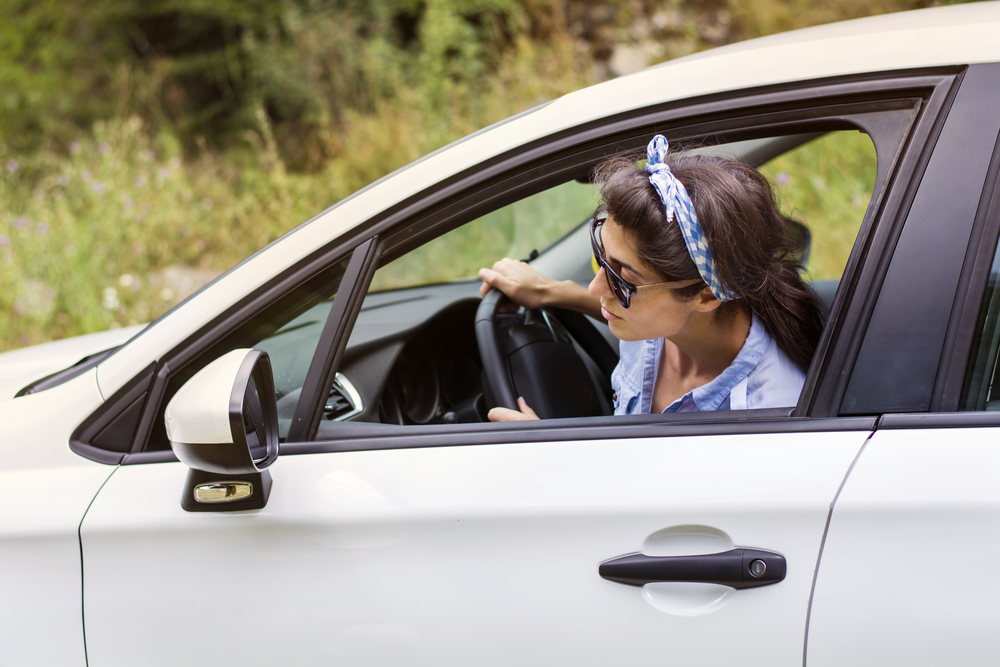My Experience with Adaptive Driving and Obtaining a License

With summer in full swing, I figure this is a good time to go in-depth about adaptive driving. I’ve been driving for about five years, and now that I’m a comfortable driver, I think I can finally address some of the questions I get about the subject.
The first thing I want to say is that the first few times that a new driver is behind the wheel are terrifying for everybody. People with disabilities have more questions and concerns about driving than the average person. Know you are not alone in these feelings, and nervousness should not stop you from pursuing a driver’s license.
I didn’t get my license until I was 19; mostly because I was afraid. But I also was going through some really difficult health issues from the ages of 16 to 18, so until that point, there never really was a right time for me to get my license. I didn’t think I was ready anyway. I tell you this to plant a seed in your mind and to encourage you to listen to your gut — you should know when you are actually incapable of doing something versus just being afraid. (I wasn’t ready for my on-the-road driver’s test and it was raining that day, but I passed on my first try. Sometimes you just have to push yourself past fear.)
So, when I first started learning to drive, my mom took me to my high school parking lot and down every back road she knew of. She wanted me to get the feel of driving and learn a few things without the pressure and distraction of other cars, signs, streetlights, and lanes, etc. But after two weeks, she decided that she might not be teaching me to drive in the best way for me. She began looking into adaptive driving programs.
I went to Good Shepherd Rehabilitation, but other local programs exist that may be a better fit for you. The cool thing about these programs is that they offer more than just driving evaluations in most cases, including helping you choose a vehicle that is best suited for your needs. They also can help you decide if you should have your driver’s seat swapped for your wheelchair, for example. If you have any questions or concerns, I encourage you to find a program that can help ease many of your fears and provide answers to your questions.
The Good Shepherd program requires documentation from a doctor, Office of Vocational Rehabilitation, or worker’s compensation. It requires you to be medically stable with optimal physical and cognitive health, seizure-free for the past six months, and have good vision as determined by your state’s guidelines. Applicants fill out a booklet of forms and then visit therapists, who perform a few vision and cognitive ability tests. Then, they check reaction time on a machine that resembles one of those racing games at an arcade. If your reaction time is slow at the beginning, don’t worry, that’s usually the case for every new driver.
After all of the paperwork and tests are completed, the therapist will talk to you about your concerns, what you think your needs are, and what they think your needs are. If the program determines that you need adaptive equipment, they will show you some resources. All of this typically happens during your first visit to the program. In my case, they thought I might need steering and pedal-lifting devices, but I decided they weren’t really helpful to me.
Here’s a link to mobility resources so that you can see the many different types of adaptive equipment available.
During a follow-up visit, for which you need a valid driver’s permit, they take you out on the road to gain some experience with your equipment. At this point, congratulations, you are driving! I know it’s uncomfortable, scary, and frustrating, but if you made it this far, you’re almost there.
In this part of the program, you can talk to your driver about how you think the devices are working (or not), and what else you may need. Communication is key as they really do want to help you. Once you return from your first driving lesson, your driver will schedule more lessons (typically two or three times a week). They will work with you until you get a license. From that point, if you still have questions about the type of vehicle you need or anything else, they can point you to other resources offered by the program.
Good luck. I know you can do it!
***
Note: Cerebral Palsy News Today is strictly a news and information website about the disorder. It does not provide medical advice, diagnosis, or treatment. This content is not intended to be a substitute for professional medical advice, diagnosis, or treatment. Always seek the advice of your physician or other qualified health provider with any questions you may have regarding a medical condition. Never disregard professional medical advice or delay in seeking it because of something you have read on this website. The opinions expressed in this column are not those of Cerebral Palsy News Today or its parent company, BioNews Services, and are intended to spark discussion about issues pertaining to cerebral palsy.




Kerry Mellin
Brittney,
Wonderful story, and a great window into the fears and accomplishments of those daily activities that take perseverance...and guts!
Thanks for sharing.
Kerry Mellin eazyhold.com